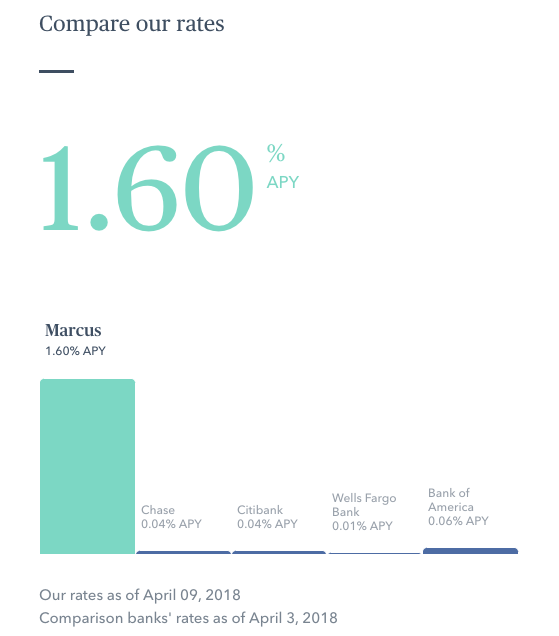Goldman Sachs makes big push for Main Street's savings accounts with higher rates
Wall Street giant Goldman Sachs (GS) is making a big push for Main Street to open savings accounts with them by toutings its significantly higher annual percentage yield.
On Wednesday, Marcus by Goldman Sachs, the 149-year-old firm’s young online consumer lending and savings arm, is rolling out its first traditional advertising campaign for U.S. deposits.
The video ads depict typical bank savings accounts as storage facilities that don’t generate meaningful returns for customers. The genesis of the idea came from a recent survey conducted by Marcus of more than 1,000 Americans that found that approximately 74% of respondents said it would be accurate to describe their bank as a place that stores their money, while only 22% said their bank is a place that makes them money.
Marcus By Goldman Sachs offers a 1.6% annual percentage yield for their savings accounts, which have no fee and no minimum balance. At 1.6%, the Goldman APY is considerably higher than the current national average of 0.07%. It’s also higher than other large consumer banks where most households keep their money.

Marcus’ rate is also higher than other online deposit competitors. Synchrony High Yield Savings, CIT Bank Premier High Yield Savings, and Barclays Online Savings offer a 1.55% rate, while Discover Bank and Barclays Online Savings offer a 1.5% APY, according to the latest data from NerdWallet.
In its survey, Marcus learned that 56% of Americans opened a savings account without looking at other options. What’s more, approximately 60% of those surveyed were unaware of their APY on their savings account, and 52% didn’t know how much they made off interest in the last year.
One of the reasons Marcus can offer better rates is it doesn’t have the major expenses associated with operating a consumer banking business, which includes brick-and-mortar bank branches and ATMs.
The consumer banking business is still relatively new for Goldman. Traditionally, Goldman’s clients have included corporations, financial institutions, governments, and high-net-worth individuals. During the 2008 financial crisis, Goldman was required to convert from a broker-dealer to a bank holding company to gain access to the Federal Reserve’s discount window, a source of liquidity. In that time, there were internal discussions on how to grow the consumer side of the business. In 2016, the bank made the first move in that direction when Goldman’s GS Bank acquired GE Capital’s online deposit platform.
During that time, Goldman also built out its online lending platform Marcus by Goldman Sachs as part of that effort. Marcus, which gives out personal loans up to $40,000 for credit-worthy borrowers, recently surpassed the $2 billion milestone for loans.
In December, the U.S. deposits integrated into the Marcus brand. Across lending and deposits, Marcus is now serving 500,000 customers. Marcus has about $20 billion in deposits and has given out $2.3 billion in loans as of December.
Julia La Roche is a finance reporter at Yahoo Finance. Follow her on Twitter.
